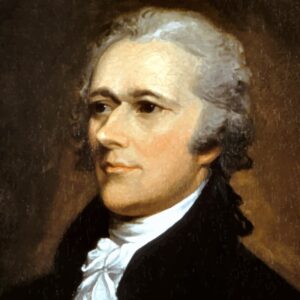Alexander Hamilton, Secretary of the Treasury, submits his second “Report on the Public Credit” to the pro-Washington (nationalist) First Constitutional Congress (elected in accordance with Article I, Section 3 [Clause 1]) , proposing the creation of the (first) central Bank of the United States, for the funding of federal debt under the Funding and Assumption Act and to establish easier credit for the expansion of domestic industries. Among the features of his plan, Hamilton proposes:
The bank is to be a private company.
The initial capitalization coming from the sale of 10,000,000 Dollars in stock 20% of which would be purchased by the United States Treasury.
The remaining 80% of the stock would be purchased by both domestic and foreign investors.
The BUS would act as the depository for taxes paid to the U.S. Treasury, which the central bank could then loan out – at interest – to the U.S. Treasury, or to favored domestic industries.
NOTE: Because the U.S. Treasury did not have 2,000,000 Dollars purchase its shares, Hamilton proposed that the BUS (which did not have any money either) loan the U.S. Treasury non-existent “fiat” (Latin for “let it become”) money that would be paid back with interest over a ten-year period.
[restored 2/12/2021]
Subsequent Events:
Authority:
“Law of the Jungle”
ccc-2point0.com/preface
References:
Calvin D. Linton, ed. The Bicentennial Almanac: 200 Years of America, 1776-1976, (Nashville, Tennessee: Thomas Nelson, 1975), 46.
The Federal Reserve and you
endthefednc.wordpress.com/
U.S. Banking Timeline
www.libertyforlife.com/banking/currency-us-timeline.html
First Bank of the United States – Wikipedia, the free encyclopedia
en.wikipedia.org/wiki/First_Bank_of_the_United_States


